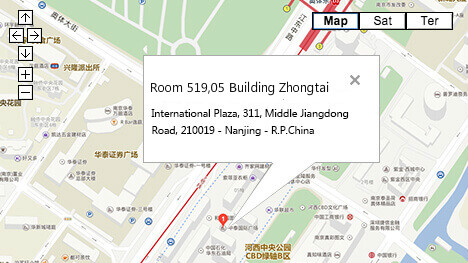Pins recall alert published by the United States Consumer Product Safety Commission ( CPSC) and…
Quality Control Technologies To Drive Manufacturing
03/07/2018 – 3:14pm by Dan Blacharski
The narrative of declining U.S. manufacturing does include some startling employment metrics, with U.S. manufacturing jobs dropping from about 17 million in 2000, to 12 million in 2015, according to the Federal Reserve. That statistic alone does not paint an accurate picture of domestic manufacturing, and manufacturing’s share of real GDP has remained constant since the 1940s.

Why is there such a dramatic difference between employment, and share of GDP? Primarily, because productivity has increased dramatically, allowing a smaller number of more highly skilled workers to produce more than was possible in previous decades. In addition to increased productivity, the “new normal” in American manufacturing is being driven by the adoption of lean strategies, and increased focus on quality control technology. Higher productivity however, cannot exist without a corresponding increase in quality control, and in the technology being used to implement it. Quality control (QC) by necessity has evolved beyond visual inspection techniques, and today is executed with massive volumes of data.
Fed by IIoT-connected (industrial Internet of Things) shop floors, this ocean of data enables both the increase in quantity, and increase in quality — and the volumes of data will only become larger. The entire digital universe is expected to reach 200ZB by 2025, with exponential growth in data driving massive changes to every industry.
An often-overlooked factor in this data explosion though, is that besides internal data contributing to improved manufacturing processes, external data from customers and the entire supply chain is making a contribution. A smarter supply chain where data sharing is the rule instead of the exception, works to the benefit of all trading partners, and this extends the quality dilemma — forcing manufacturers to not only implement new protocols and technologies for their own quality control measures, but for that of their entire universe of supply chain partners, and ideally, with a 360-degree view.
The value of IIoT goes far beyond operations measurement. Of even greater value is using that data for more transformative areas, including research and development and continuous improvement.
QC in Domestic Manufacturing
Since the ’40s, domestic manufacturing has always been driven by quality and precision, simply due to market expectations and point of pride. Now another factor has entered the landscape to further drive the constant and increasing focus on quality, and that is the fact that foreign competition is catching up.
This renewed focus on quality control is evident in several areas already. One example can be seen in anti-foaming, a basic manufacturing tactic used across several industries, from pharmaceuticals, to oil and gas, to food processing and brewing. It’s a behind-the-scenes technology that until recently has not seen much change in how it is accomplished.
Moving from a largely visual and manual method of monitoring which used to be common in all industries, anti-foaming now uses intelligent multi-action (IMA) sensing, a technological innovation which provides greater reliability. Anti-foaming alone is set to see significant revenue growth through 2025, marking just one part of a much larger ecosystem of more technologically-based quality control.
Increased Regulatory Pressure Driving QC Improvement
Much of the pressure for improved QC is driven by global competition and by an increased level of awareness on the part of customers and consumers. But another factor has entered into the race to drive improvements in the manufacturing process, and that is an increase in government oversight and regulation.
In the pharmaceutical industry for example, a report from PwC noted that the FDA’s Center for Drug Evaluation and Research issued more warning letters last year, mostly due to data integrity issues, and violations of Good Manufacturing Practices. PwC suggests that the increased volume of warning letters is not necessarily due to an uptick in process failures, but rather, an increase in the strength of the agency’s oversight.
A Paradigm Shift in the Competitive Landscape
But while productivity is steadily rising, domestic manufacturing faces greater global competition, especially as China moves forward with advances in their own manufacturing technology. Solutions for maintaining competitive dominance for U.S. manufacturers depends on multiple factors, including the government’s role in policy and regulation, industrial IoT, and access to an educated workforce, although the largest contributing factor to success will be an increased focus on quality control, and a more accurate assessment of the QC measures of global competitors.
A perception of China as being a producer of inferior goods is outdated, and the perception is dangerous to American manufacturers, who may be lulled into a false sense of security by the inaccurate belief that Chinese goods by definition adhere to lower standards. Increased quality control, greater levels of technology innovation, and a focus on STEM education in China has made Chinese manufacturers formidable competitors.
The early post-war dominance the U.S. enjoyed has inevitably diminished, due in large part to this globalization, and the increasing level of innovation and modernization coming out of China. Indeed, the World Economic Forum reports that the U.S. will become “increasingly challenged” by emerging economies over the next decade, as those countries build out their manufacturing capabilities.
Chinese manufacturing has changed dramatically over the past 20 years, from low-quality mass production to one of the most innovative and productive environments in the world. Global expectations have risen, and China has met this expectation with a greater focus on high-quality production. To compete, domestic manufacturers need to revisit their own quality control protocols.
Article Source: https://www.manufacturing.net/article/2018/03/quality-control-technologies-drive-manufacturing


This Post Has 0 Comments